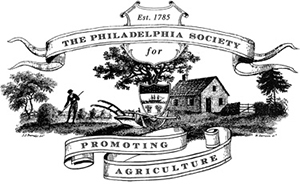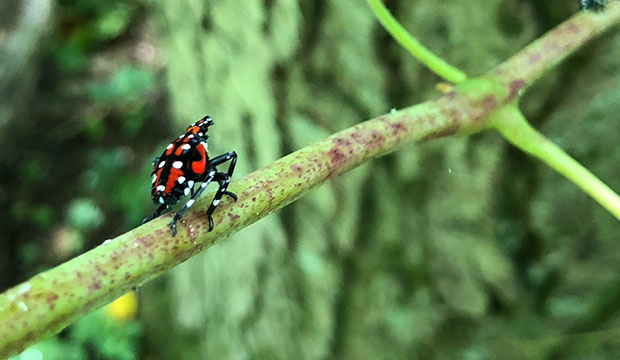The spotted lantern fly is indigenous to China, India, Japan, South Korea, and Vietnam. The first detection of the spotted lantern fly in the United States occurred in Pennsylvania in September of 2014. Spotted lantern flies are invasive and can spread rapidly when introduced to new areas. While the insect can walk, jump, or fly short distances, its long-distance spread is facilitated by people who move infested material or items containing egg masses.
Damage
Both nymphs and adults of the spotted lantern fly cause damage when they feed, sucking sap from stems and leaves. This can reduce photosynthesis, weaken the plant, and eventually contribute to the plant’s death. In addition, feeding can cause the plant to ooze or weep, resulting in a fermented odor, and the insects themselves excrete large amounts of fluid (honeydew). These fluids promote mold growth and attract other insects.
Description
Adult spotted lantern flies are approximately 1 inch long and one- half inch wide, and they have large and visually striking wings. Their fore wings are light brown with black spots at the front and a speckled band at the rear. Their hind wings are scarlet with black spots at the front and white and black bars at the rear. Their abdomen is yellow with black bars. Nymphs in their early stages of development appear black with white spots and turn to a red phase before becoming adults. Egg masses are yellowish-brown in color, covered with a gray, waxy coating prior to hatching.
Life Cycle
The spotted lantern fly lays its eggs on smooth host plant surfaces and on non-host material, such as bricks, stones, and dead plants. Eggs hatch in the spring and early summer, and nymphs begin feeding on a wide range of host plants by sucking sap from young stems and leaves. Adults appear in late July and tend to focus their feeding on tree of heaven (A. altissima) and grapevine (Vitis vinifera). As the adults feed, they excrete sticky, sugar-rich fluid similar to honeydew. As mentioned above, the fluid can build up on plants and on the ground underneath infested plants, causing sooty mold to form.
Where To Look
Spotted lantern fly adults and nymphs frequently gather in large numbers on host plants. They are easiest to spot at dusk or at night as they migrate up and down the trunk of the plant. During the day, they tend to cluster near the base of the plant if there is adequate cover or in the canopy, making them more difficult to see. Egg masses can be found on smooth surfaces on the trunks of host plants and on other smooth surfaces, including brick, stone, and dead plants.
Report Your Findings
If you find an insect that you suspect is the spotted lantern fly, please contact your local Cooperative Extension office or State Plant Regulatory Official to have the specimen identified properly.
¹In Pennsylvania, adult spotted lantern flies have also been found feeding and egg laying on willow, maple, poplar, and sycamore, as well as on fruit trees, like plum, cherry, and peach.

